
According to a representative of the Hue Royal Antiquities Museum (under the Hue Monuments Conservation Center), the unit has recently cooperated with the Vietnam Information Technology Association and Phygital Labs Joint Stock Company to create identification codes for antiquities on display at Long An Palace through a digital physical experience portal with quick response code (QR code) scanning and NFC chip (short-range wireless connection technology).
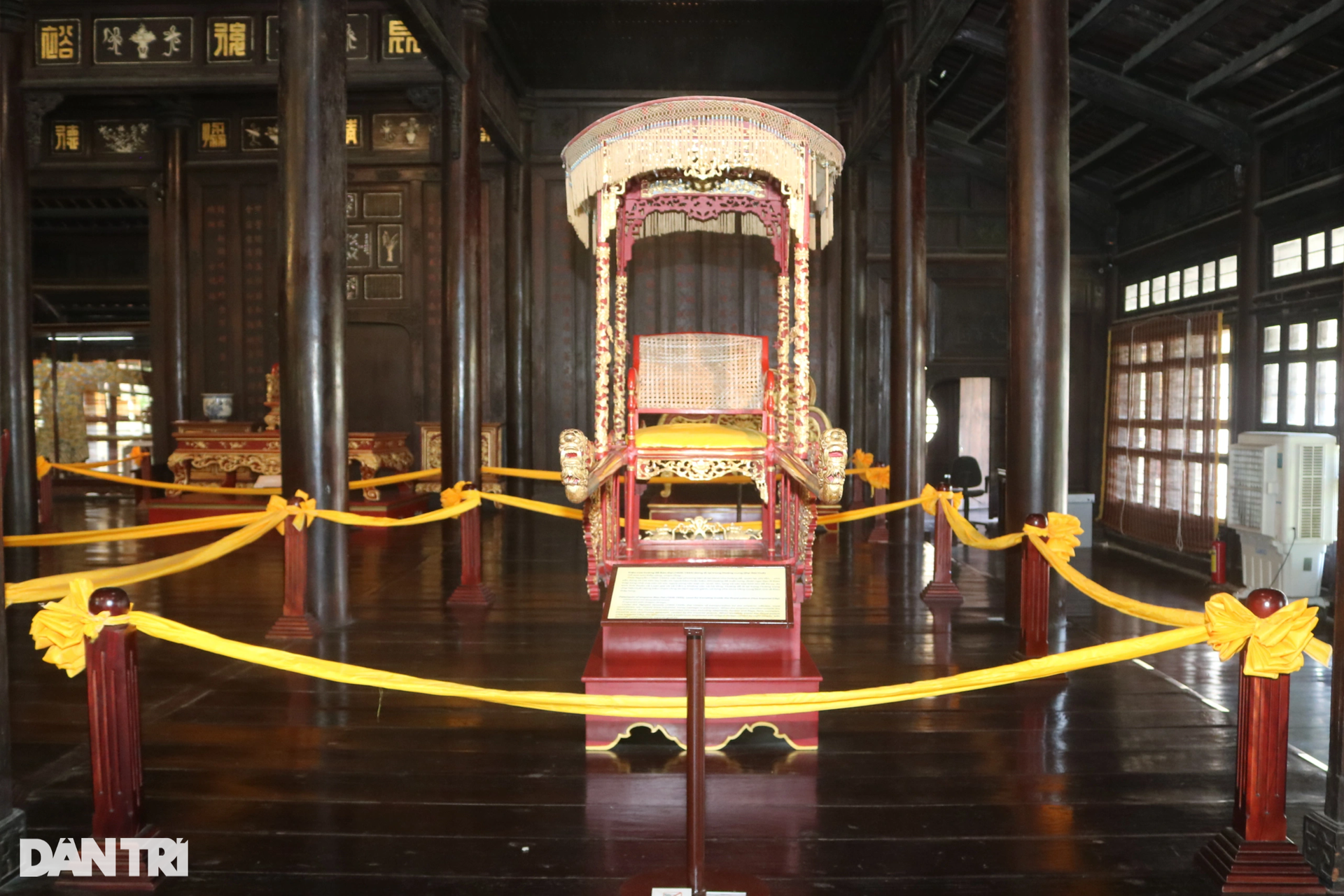
The palanquin of Emperor Bao Dai (1926-1945) used to travel in the Royal Palace (Hue Imperial City), made of gilded wood, carved with dragons.
There will be 100 artifacts identified using scanning technology, infrared light measurement and virtual reality to bring the artifacts into digital space, providing a visual experience with a fascinating story about the history of the artifacts, allowing global visitors to easily access "real and digital products".
Up to now, 10 antiques (7 antiques are on display at Long An Palace) have been chip-embedded. They are typical antiques, diverse in type and function (royal objects used in daily life and ceremonies such as thrones, palanquins, shoes..., used for interior decoration such as gold branches and jade leaves or entertainment...), reflecting the characteristics of the material life, ceremonies, politics and ideology of the Nguyen Dynasty kings and mandarins.
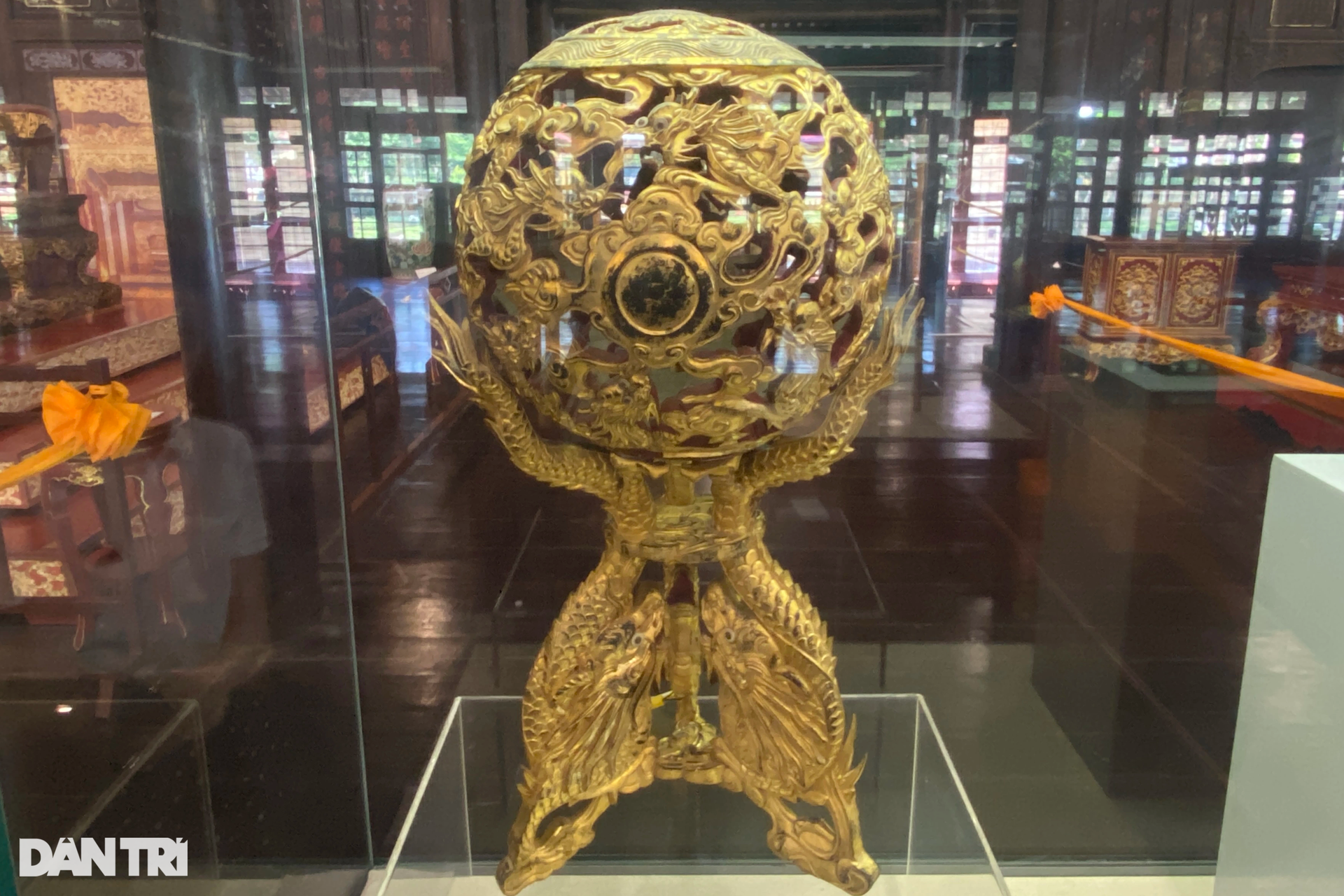
The Nine Dragons Orb, a unique piece of furniture once displayed in the Nguyen Dynasty royal palace. This artifact is shaped like nine dragons surrounding a pearl, made of precious wood with the entire surface gilded with gold using traditional techniques.
The relic is currently on display at Long An Palace - Hue Royal Antiquities Museum (Hue city, Thua Thien Hue province)
In the coming time, the Hue Monuments Conservation Center and the Hue Royal Antiquities Museum will continue to compile content and scan/take images of the artifacts displayed and preserved at the Museum in particular and the Center in general, helping global visitors to view and learn about information and images related to artifacts through digital space.
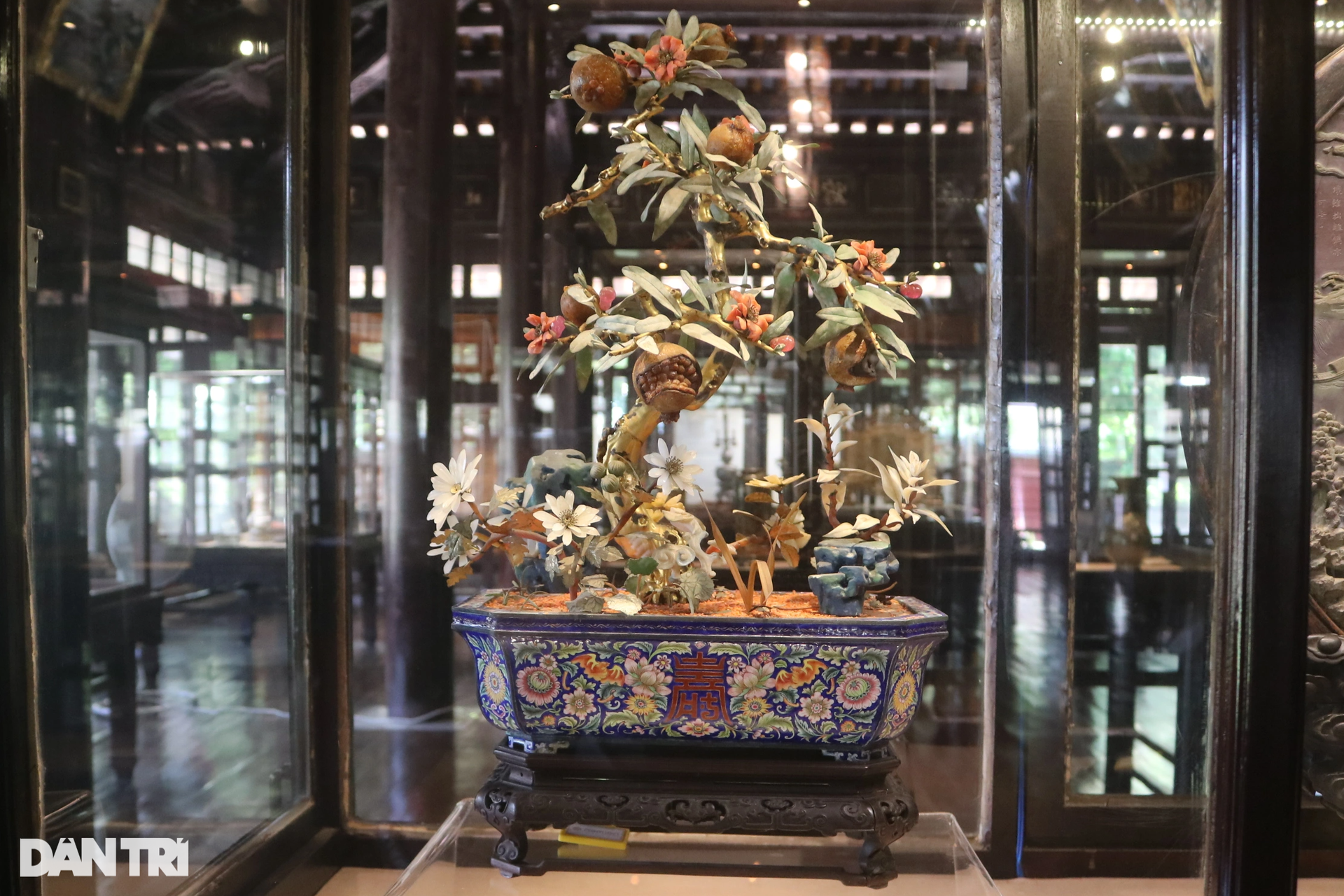
The golden branches and jade leaves are a special type of antique, once present in many palaces and royal tombs in Hue. As the name suggests, the branches are gilded, the flowers and leaves are made of jade.
Currently, at the Hue Royal Antiquities Museum, there are two artifacts of golden branches and jade leaves with wooden trunks and branches, gilded with gold and jade leaves, mounted in enamel pots.
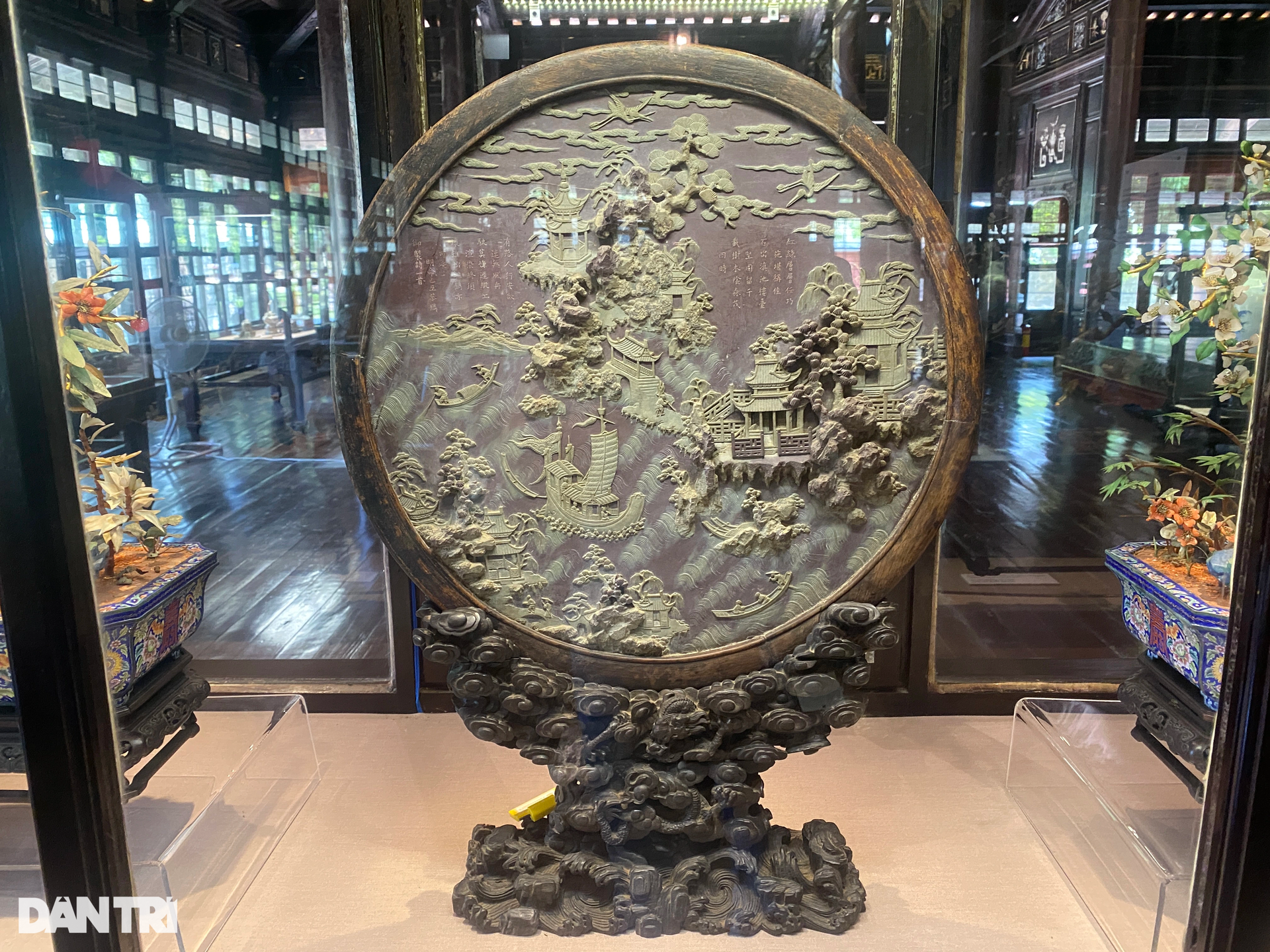
The two-sided wooden-framed stone relief, of which the front side is exquisitely carved, was once placed in the Nguyen Dynasty palace.
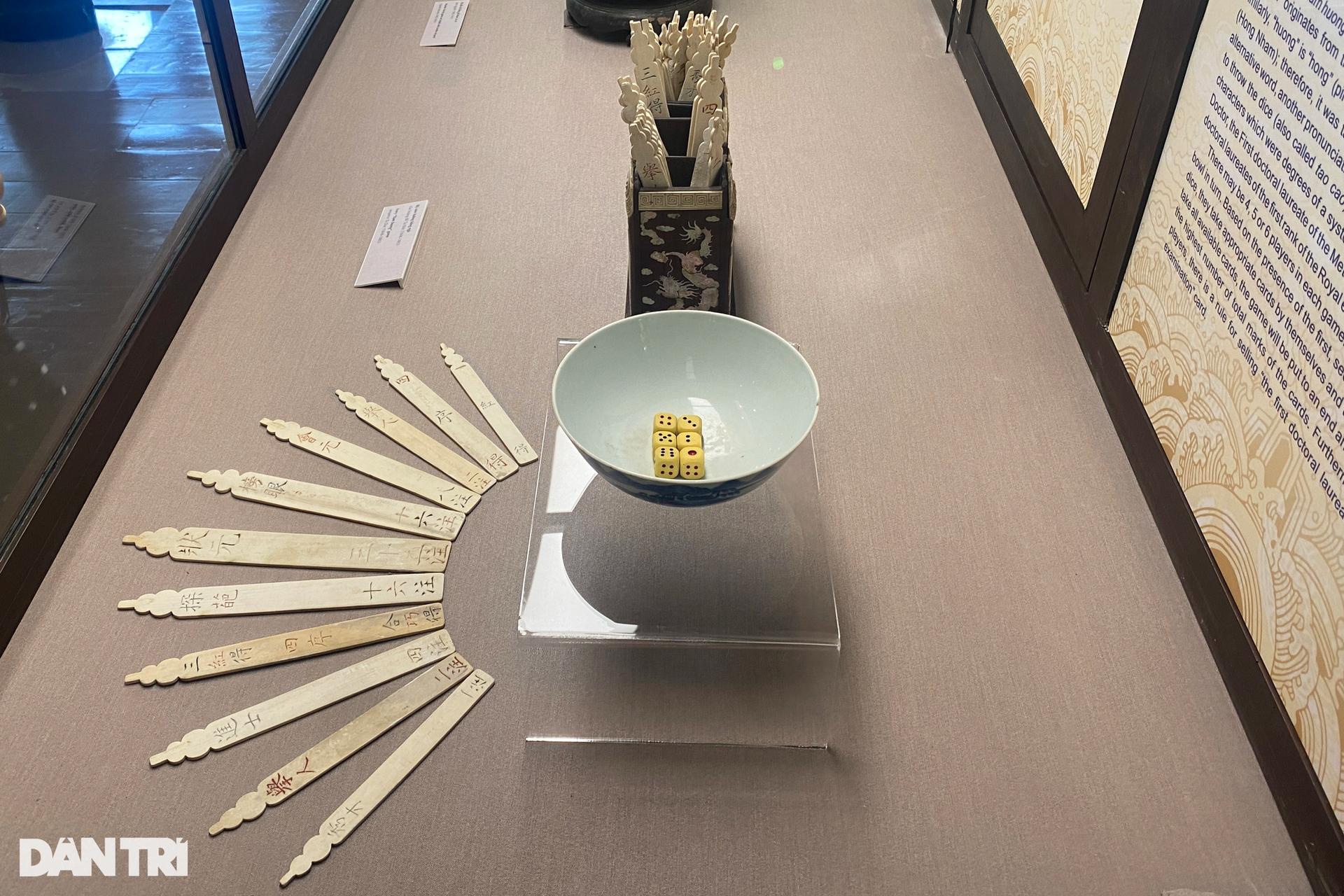
Ivory tattoo set of Emperor Tu Duc (1829-1883), the longest-reigning king of the Nguyen Dynasty, with 36 years (1847-1883).
Do xam huong is a game of rolling dice to win cards engraved with Chinese characters, recording academic degrees in the ancient examination system, such as: Bachelor, Bachelor, Doctor, First Class, Third Class, Second Class, and First Class.
"Huong" is a misreading of the word "Hong" (meaning pink - the color of the "four" side on the dice, but also in the name Hong Nham of King Tu Duc, so it should be avoided). After King Tu Duc passed away, the Hoa Khiem palace still kept the sets of head ho and pink tattoos that the king used.
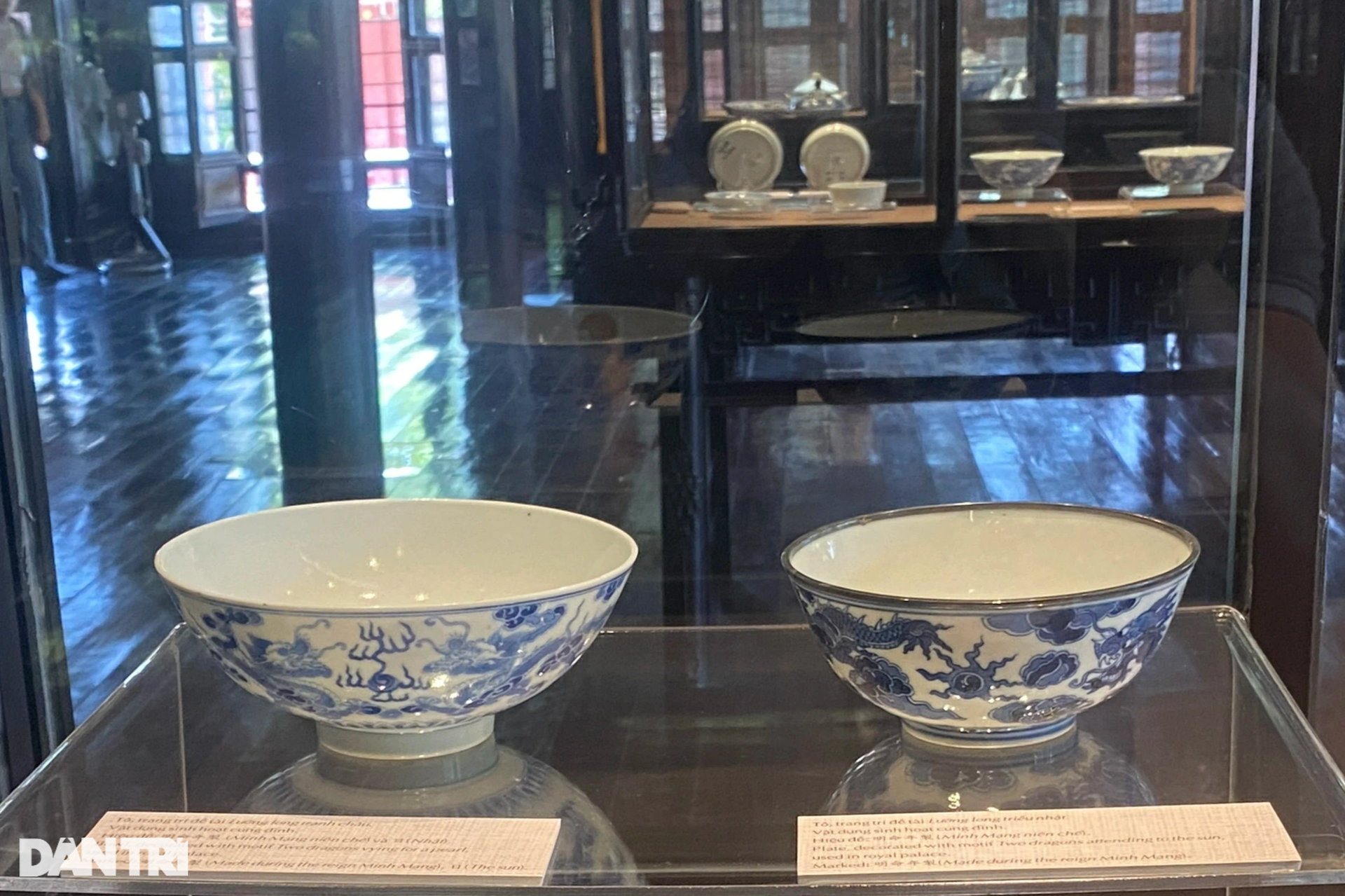
Nguyen Dynasty porcelain bowls on display at the Hue Royal Antiquities Museum have just been fitted with a digital identification chip.
According to the Hue Royal Antiquities Museum, "signed porcelain" is the name used to refer to porcelain items ordered by Vietnamese people (emperors, mandarins, and commoners) at Chinese kilns from the second half of the 17th century to the early 20th century, with specific requirements for design, color, decorative patterns, illustrative poems, and inscriptions.
During the Nguyen Dynasty (1802-1945), the diplomatic missions to China, in addition to the main tasks of requesting investiture, expressing gratitude, announcing, and congratulating , also had the task of ordering porcelain for the royal court, mainly under the reigns of the following emperors: Gia Long (1802-1820), Minh Mang (1820-1841), Thieu Tri (1841-1847), Tu Duc (1848-1883), Khai Dinh (1916-1925). Nguyen Dynasty porcelain was rich in types, designs, and diverse in themes and decorative motifs.
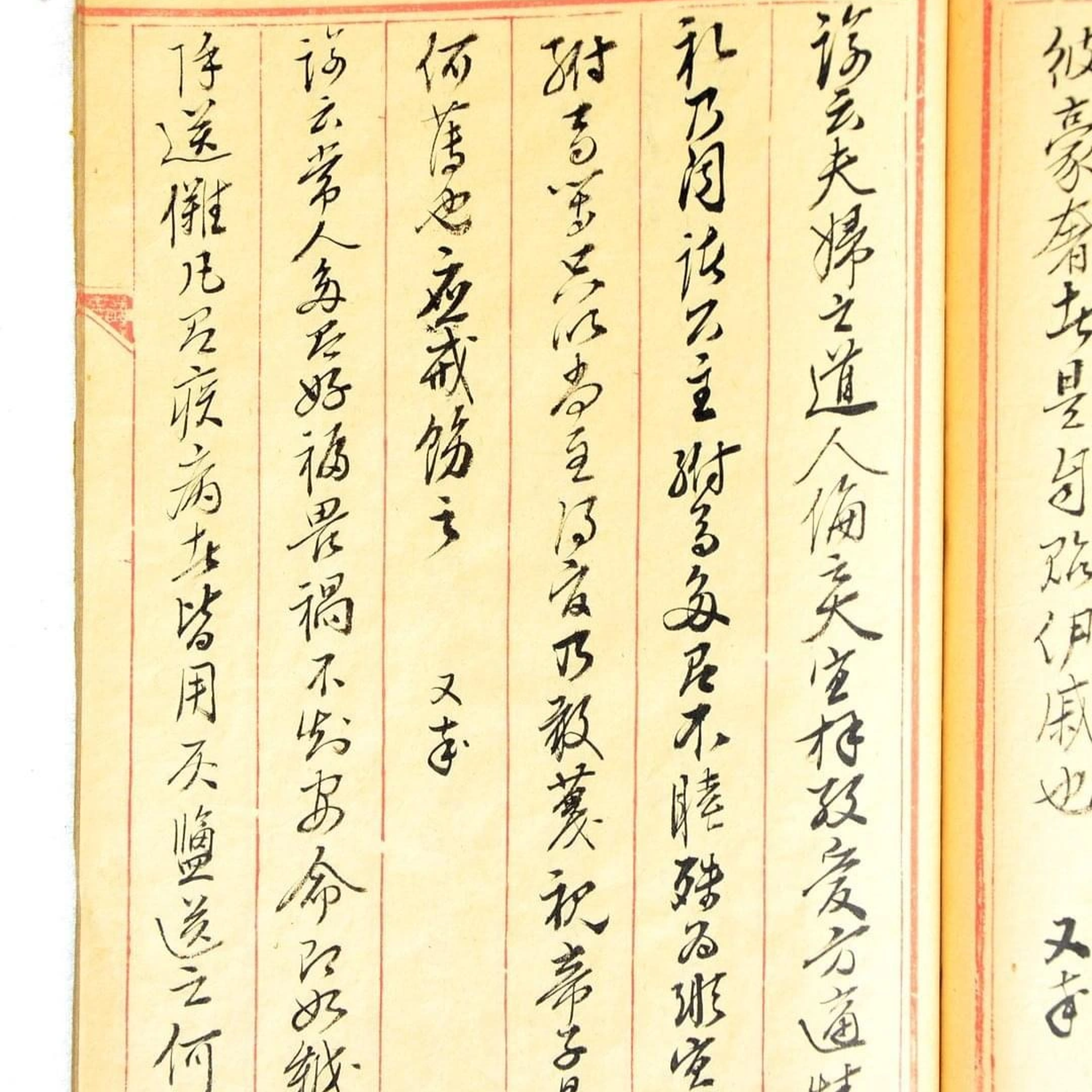
The original 1 page in the book Tu Huan Luc, an antique, has also been fitted with an identification chip.
According to the Hue Royal Antiquities Museum, these are the records of the teachings of Queen Mother Tu Du (aka Queen Nghi Thien Chuong), mother of King Tu Duc (Photo: Hue Royal Antiquities Museum).
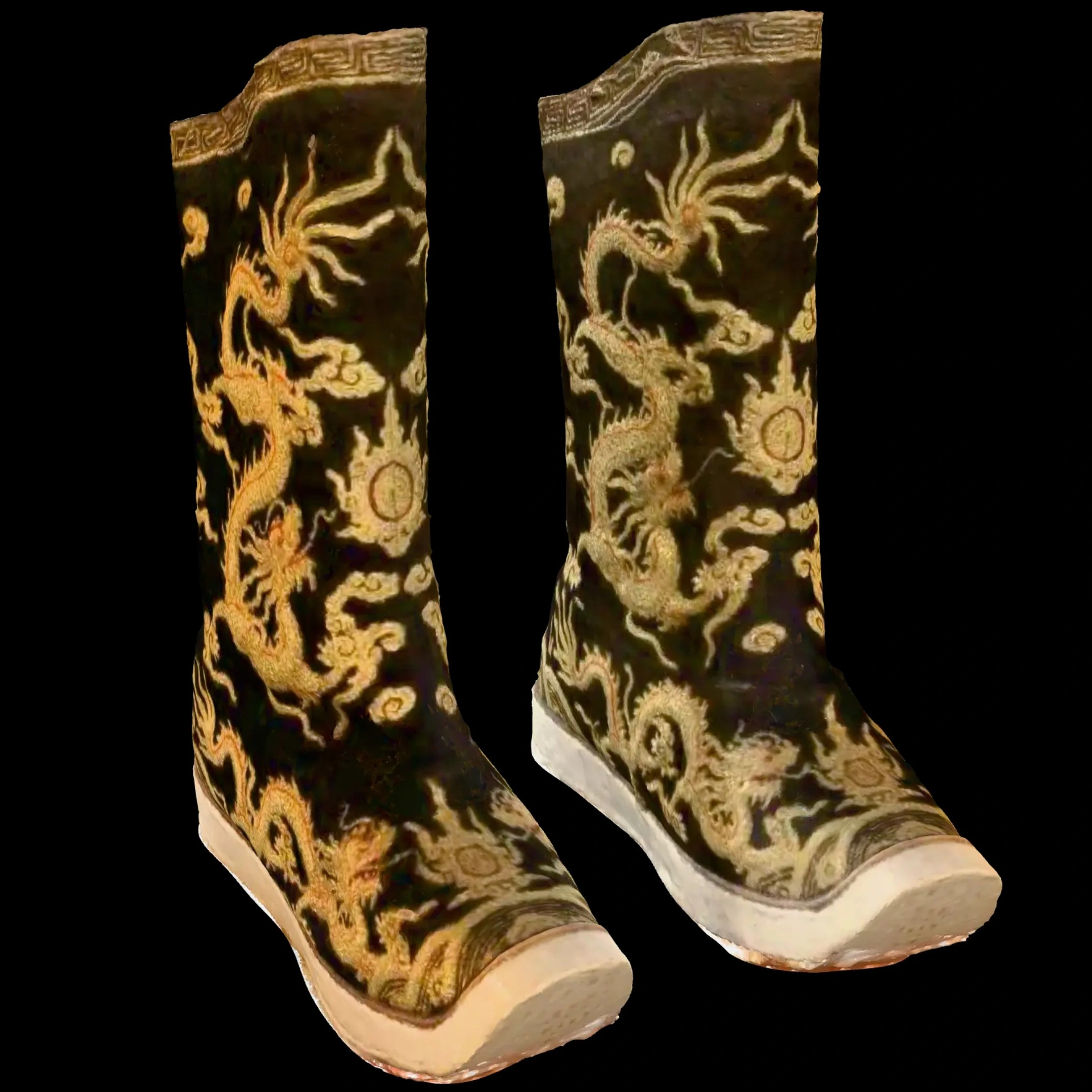
A pair of Nguyen Dynasty sandals, one of 10 antiques selected for pilot identification of the number of all things (Nomion), displayed in digital space.
According to a representative of the Hue Royal Antiquities Museum, this artifact is currently on display at Kien Trung Palace, inside the Hue Imperial City (Photo: Hue Royal Antiquities Museum).
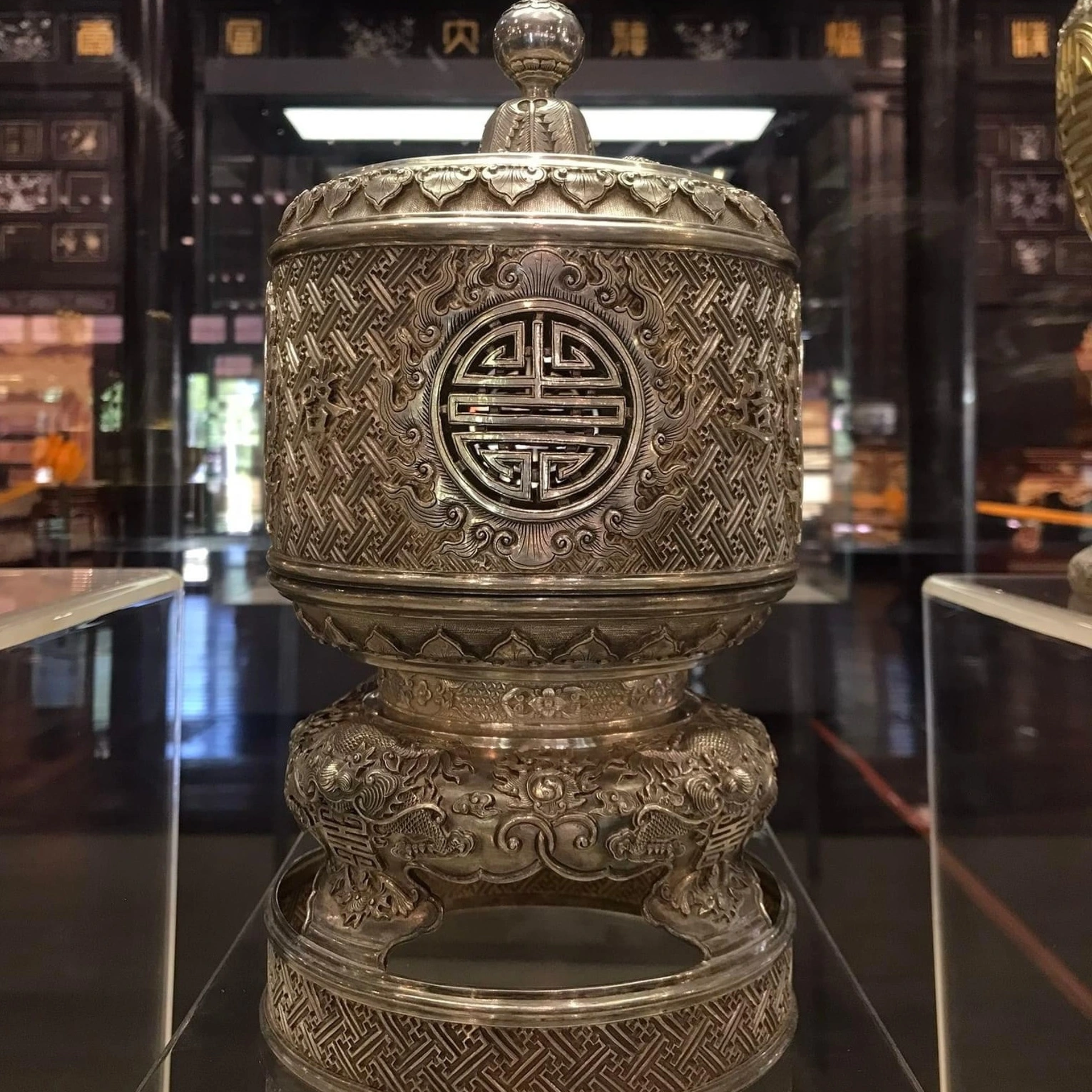
Silver altar relic, 1 of 10 Nguyen Dynasty relics selected for pilot identification number (Photo: Hue Royal Antiquities Museum).
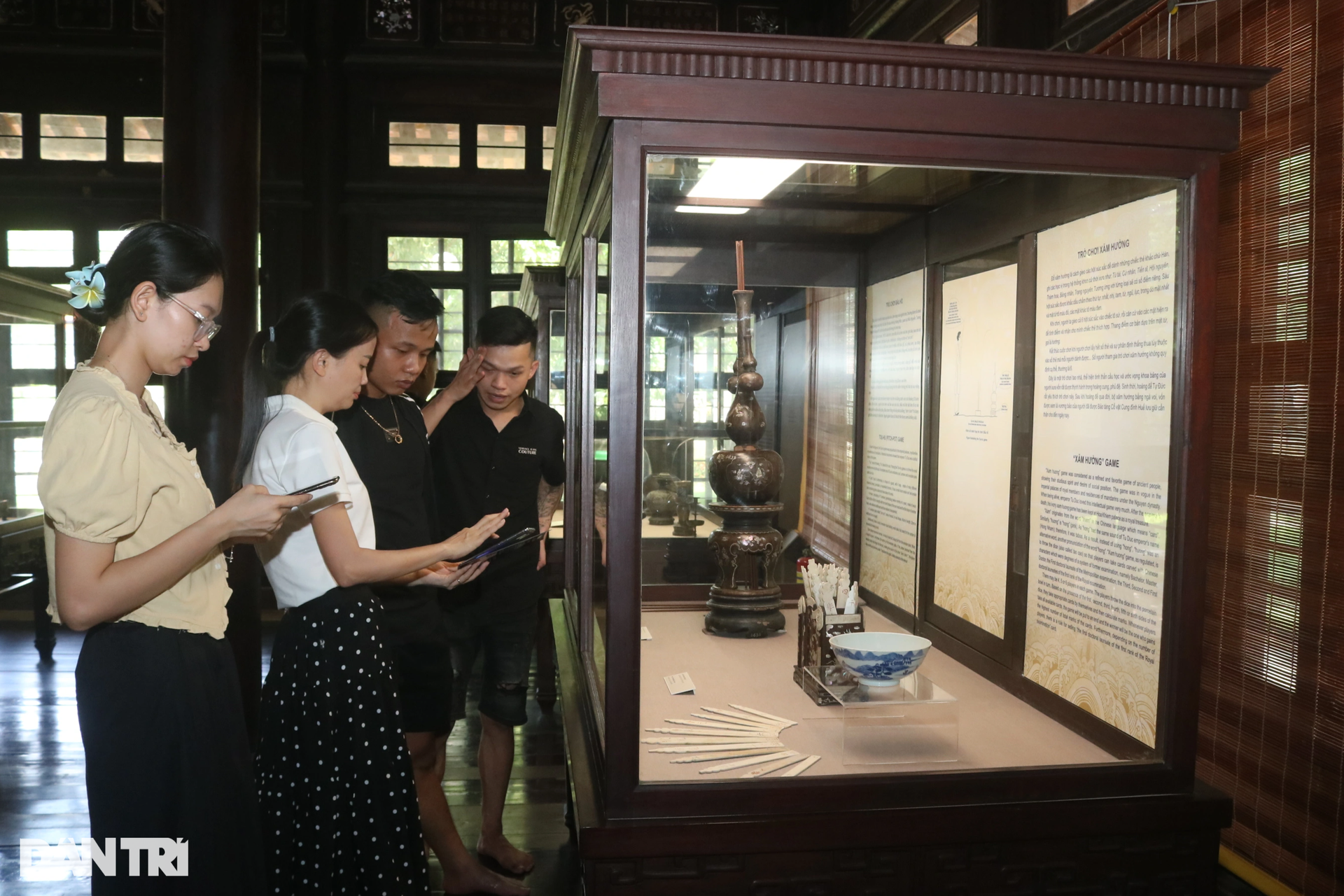
Staff at the Hue Royal Antiquities Museum guide visitors to use smartphones to experience and look up information related to artifacts and antiquities that have been equipped with NFC chips for digital identification.
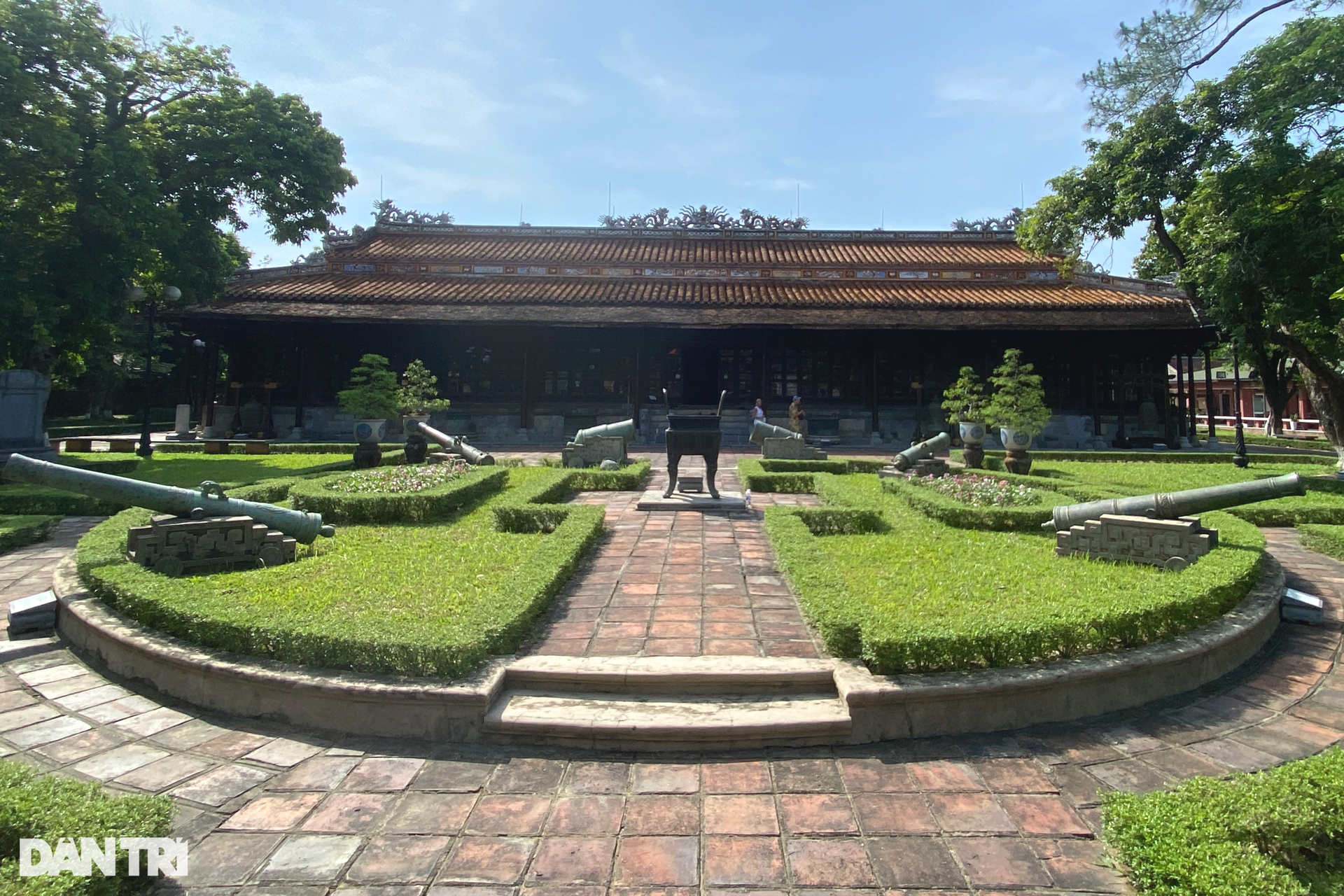
Hue Royal Antiquities Museum, which displays most of the antiques and artifacts related to the Nguyen Dynasty in Hue.
Source: https://dantri.com.vn/thoi-su/ngam-10-co-vat-trieu-nguyen-vua-duoc-dinh-danh-so-20240519181307892.htm














![[Photo] "Ship graveyard" on Xuan Dai Bay](https://vphoto.vietnam.vn/thumb/1200x675/vietnam/resource/IMAGE/2025/11/08/1762577162805_ndo_br_tb5-jpg.webp)

















![[Video] Hue Monuments reopen to welcome visitors](https://vphoto.vietnam.vn/thumb/402x226/vietnam/resource/IMAGE/2025/11/05/1762301089171_dung01-05-43-09still013-jpg.webp)



















































































Comment (0)